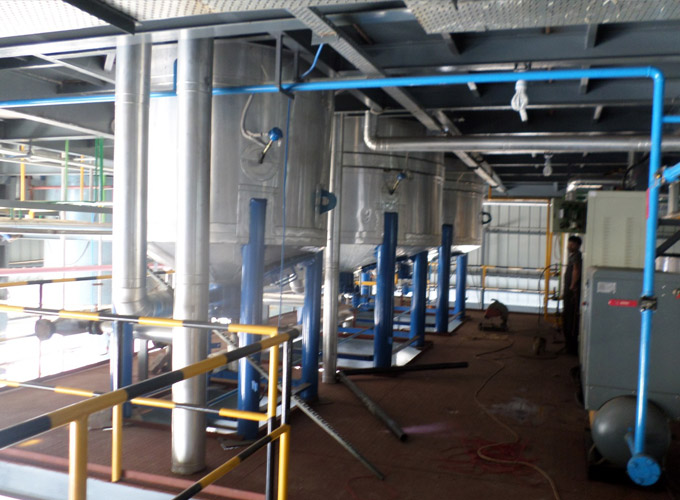
In the realm of soybean oil refining, the choice of equipment material is crucial for both performance and food safety. This article delves into the five key advantages of using 304 stainless steel in soybean oil refining equipment, especially when compared to ordinary carbon steel.

304 stainless steel offers significant improvements in equipment performance and food safety. Firstly, it has excellent corrosion resistance. In a soybean oil refining environment, where various chemicals are involved, carbon steel is prone to rust and corrosion, which can contaminate the oil. In contrast, 304 stainless steel can withstand the corrosive effects of these substances, ensuring the purity of the refined oil. According to industry data, the corrosion rate of 304 stainless steel is less than 0.01mm/year, while that of carbon steel can be up to 0.1mm/year in the same environment.
Secondly, 304 stainless steel has better heat resistance. During the refining process, high temperatures are often required. 304 stainless steel can maintain its structural integrity and mechanical properties at high temperatures, preventing deformation and damage to the equipment. This is crucial for ensuring the stability of the refining process and the quality of the final product.
Thirdly, it is more hygienic. 304 stainless steel has a smooth surface that is difficult for bacteria and other microorganisms to adhere to. This helps to ensure the safety and quality of the refined oil, meeting the strict requirements of food safety standards. In comparison, the rough surface of carbon steel can easily harbor bacteria, posing a potential threat to food safety.
Fourthly, 304 stainless steel has higher strength. It can withstand greater pressure and stress during the operation of the equipment, reducing the risk of equipment failure and improving the reliability of the production process. Finally, it is more aesthetically pleasing. The shiny surface of 304 stainless steel gives the equipment a modern and high - end look, which can also enhance the brand image of the oil processing factory.
The four - process integration of soybean oil refining equipment has a significant impact on production efficiency and quality control. These four processes include degumming, deacidification, decolorization, and deodorization. When these processes are highly integrated, the production process becomes more streamlined, reducing the transfer time between different processes and improving overall production efficiency. For example, in a traditional non - integrated system, the production cycle may be 24 hours, while in a four - process integrated system, it can be reduced to 16 hours.
Moreover, the integrated design allows for better control of the process parameters at each stage, ensuring the consistency and quality of the refined oil. This is crucial for meeting the market demand for high - quality soybean oil.
.jpg)
Modular design simplifies the installation and commissioning of the equipment. Each module is pre - fabricated and tested in the factory, which reduces the on - site installation time. For example, a traditional non - modular equipment installation may take 30 days, while a modular equipment can be installed in just 15 days. It also reduces the difficulty of maintenance. If a module fails, it can be easily replaced, minimizing the downtime of the equipment. Additionally, the modular design shortens the production start - up cycle, allowing the factory to start production earlier and generate revenue more quickly.
Obtaining CE and ISO9001 certifications is of great importance for soybean oil refining equipment. The CE certification indicates that the equipment meets the essential health and safety requirements of the European Union market. The ISO9001 certification reflects the company's ability to maintain a high - quality management system. These certifications not only ensure the compliance of the equipment with international food safety standards but also enhance the credibility and market competitiveness of the equipment manufacturer.

This article also provides a practical guide and real - life case sharing. Through these cases, we can learn about energy - saving operation skills, typical installation mistakes, and how to avoid them. For example, a certain oil processing factory reduced its energy consumption by 20% after adopting our energy - saving operation suggestions.
In conclusion, if you are a technical director or procurement decision - maker in a grain and oil processing factory, and you are looking for a high - quality solution for soybean oil refining equipment, we invite you to download our Soybean Oil Refining Equipment Selection Self - Check List and book a free technical consultation. This will help you make a scientific decision, optimize the installation process, reduce energy consumption and emissions, and achieve stable and high - quality production.











